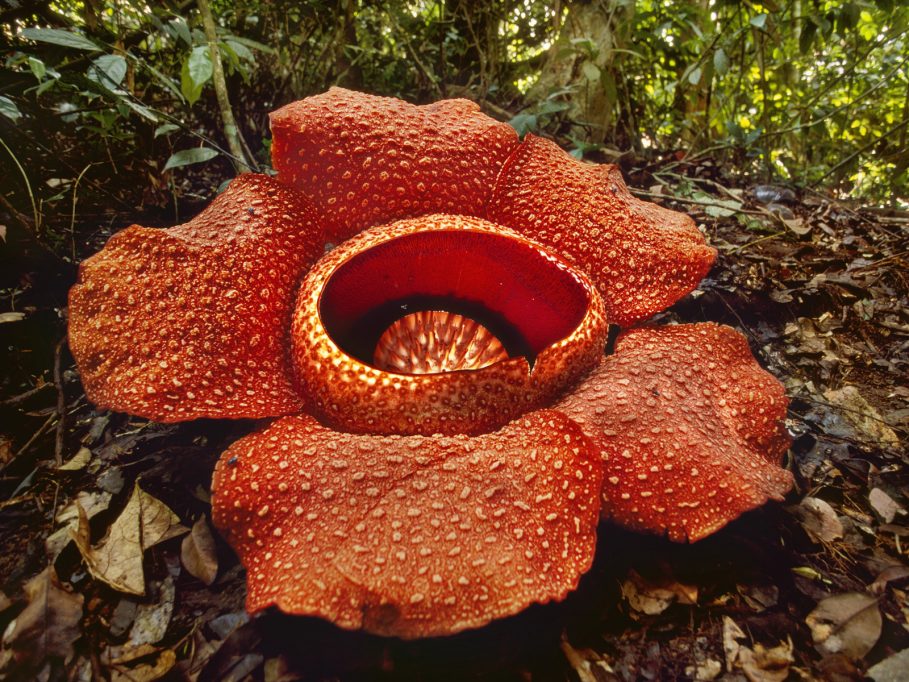Rafflesia, a native of rainforests of Sumatra and Borneo in the Indonesian Archipelago, is the largest flower in the world. Interestingly, Rafflesia is a parasitic plant without any leaves, stems and roots (It has only nutrient-absorbing threads to absorb nutrients from the host on which it lives) but for the largest flower.
It was first discovered by Louis Deschamps in Java between 1791 and 1794. It was later found in the Indonesian rain forest in Bengkulu, Sumatra by an Indonesian guide working for Dr. Joseph Arnold in 1818 and named after Sir Thomas Stamford Raffles, the leader of the expedition.
Rafflesia is a huge speckled five-petaled flower with a diameter up to 106 cm, and weighing up to 10 kg.
Rafflesia flower has a small life of 5-7 days. Rafflesias have their stamens and pistils fused together in a central column, producing a corona, or crown, in the shape of a ring.
The reddish brown colors of the petals are sprinkled with white freckles. The smell attracts the carrion flies and then pollination occurs. After 9 months of maturation, Rafflesia plant opens into a cabbage-sized bud.
